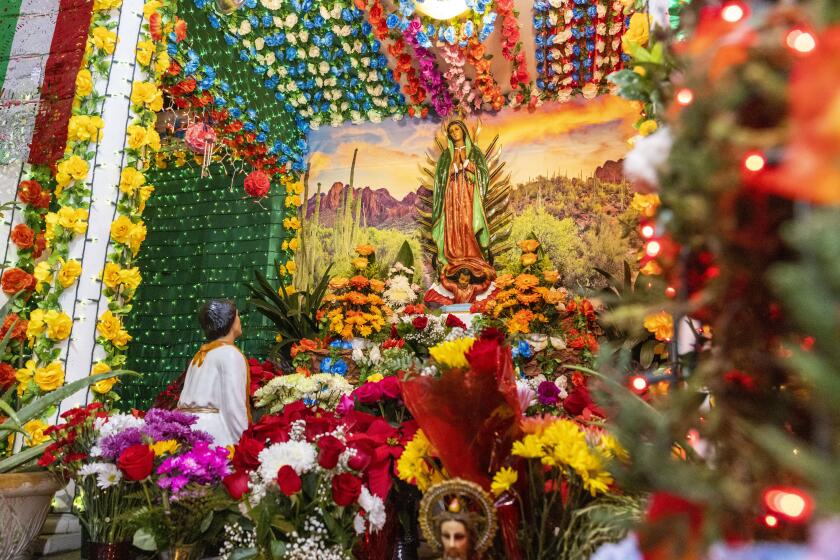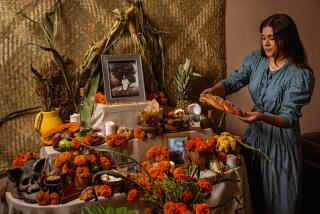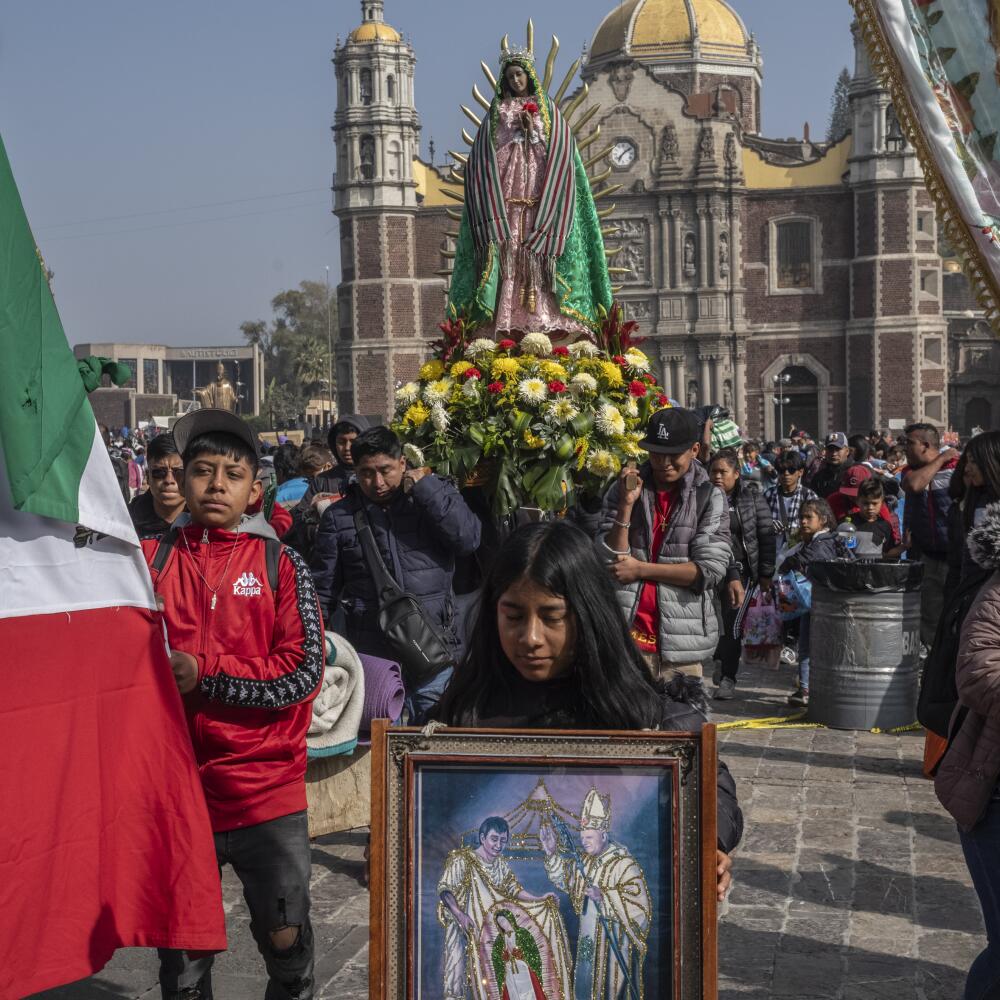
- Share via
MEXICO CITY — On the eve of the Feast of Our Lady of Guadalupe, two groups of dancers, the Santiagueros and the Pilatos, fight in the atrium of the Basilica of the Virgin of Guadalupe in Mexico City. In their respective red and black velvet dresses, the young dancers jump back and forth while their wooden machetes clash to the rhythm of drums and flutes. The Dance of the Santiagueros, a variant of the dance of the Moors and Christians, represents the triumph of Christianity over the “infidel peoples.”
Seventeen-year-old Yoana Cruz is dancing in La Morenita’s house for the first time. She joined the group of dancers from her community of El Rosario, in the southern state of Michoacán, five years ago. For Cruz, dancing to honor the Virgin is a ritual of happiness.
“The energy you feel when dancing is very beautiful. I feel a lot of peace and a lot of happiness, and coming to dance here to the Virgin is something very special,” Cruz said.
After honoring the Guadalupana in Mexico City, the danzantes continued their pilgrimage back to El Rosario in the early hours of Dec. 12. Every year, Cruz and her compañeros show their devotion by dancing for hours during the fiesta patronal, which is partly funded by former dancers who had to migrate to the United States due to the dire economic situation in the communities of Michoacán.
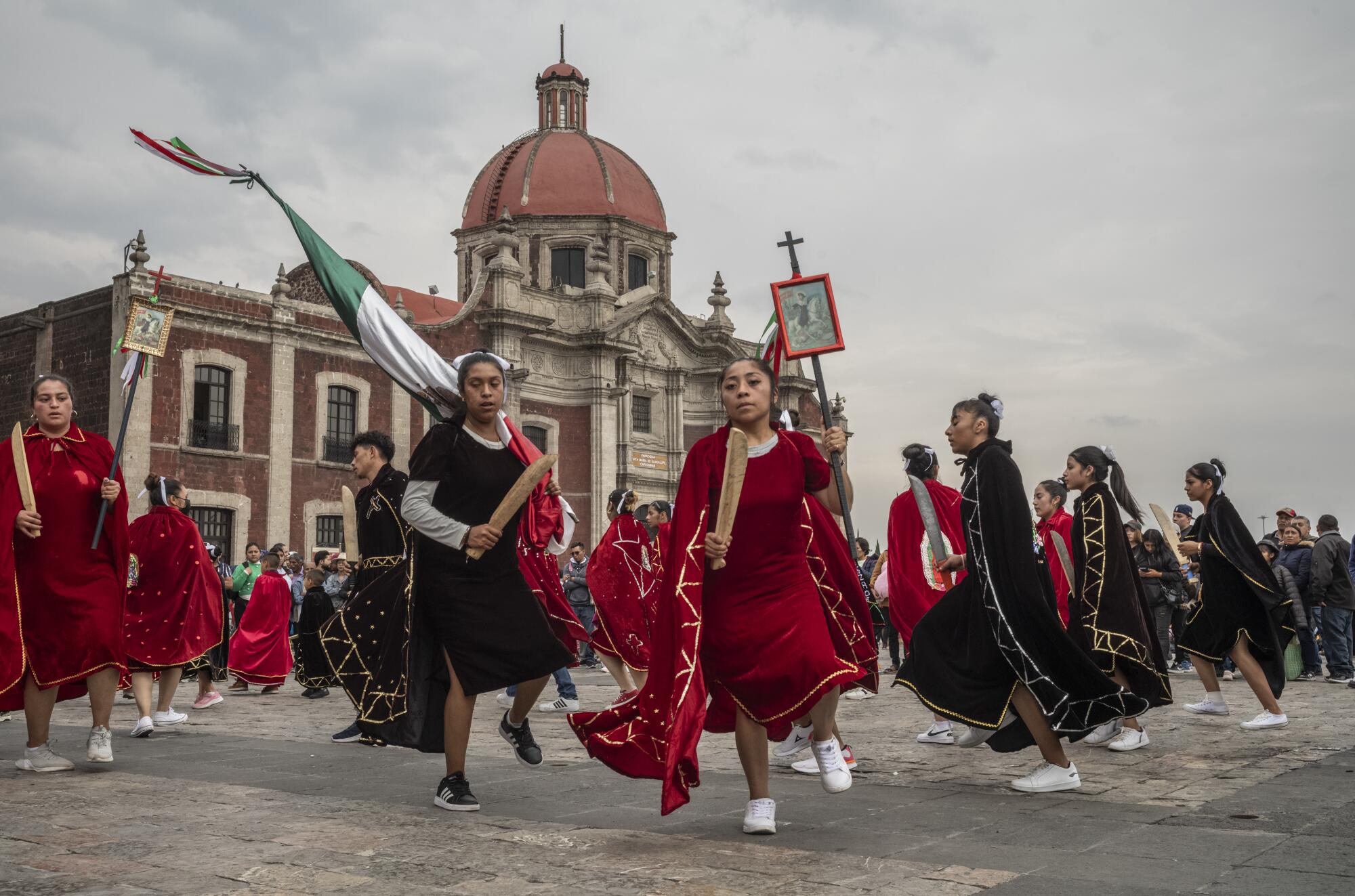
Dance groups arriving from different parts of the country perform in front of the shrine in the northern part of Mexico City to celebrate the Mexican patron saint. Most of the dances were originally introduced by the missionaries to Christianize the Indigenous peoples, but the spectacles performed in front of thousands at the Basilica were a symbol of tradition of the relationship between the pueblos and La Morenita.
Last year, the dancers of El Rosario couldn’t attend the festivities due to organized crime violence and the high levels of recruitment of young people by these groups. For years, women were prohibited from performing the Danza of the Santiagueros . They were finally allowed to join after years of pressure. Now, the group is mostly made up of young women.
The daily struggles of Mexican families and the systemic issues they have historically faced are reflected in the dances and ceremonies offered to the Virgencita, a powerful symbol of a Morena who listens to the oppressed. The Dance of the Negritos from Puebla, and the Danza de los Diablos, from the Costa Chica of Guerrero, symbolize the resistance that Indigenous and Afro-Mexican communities lead in the face of marginalization and discrimination.
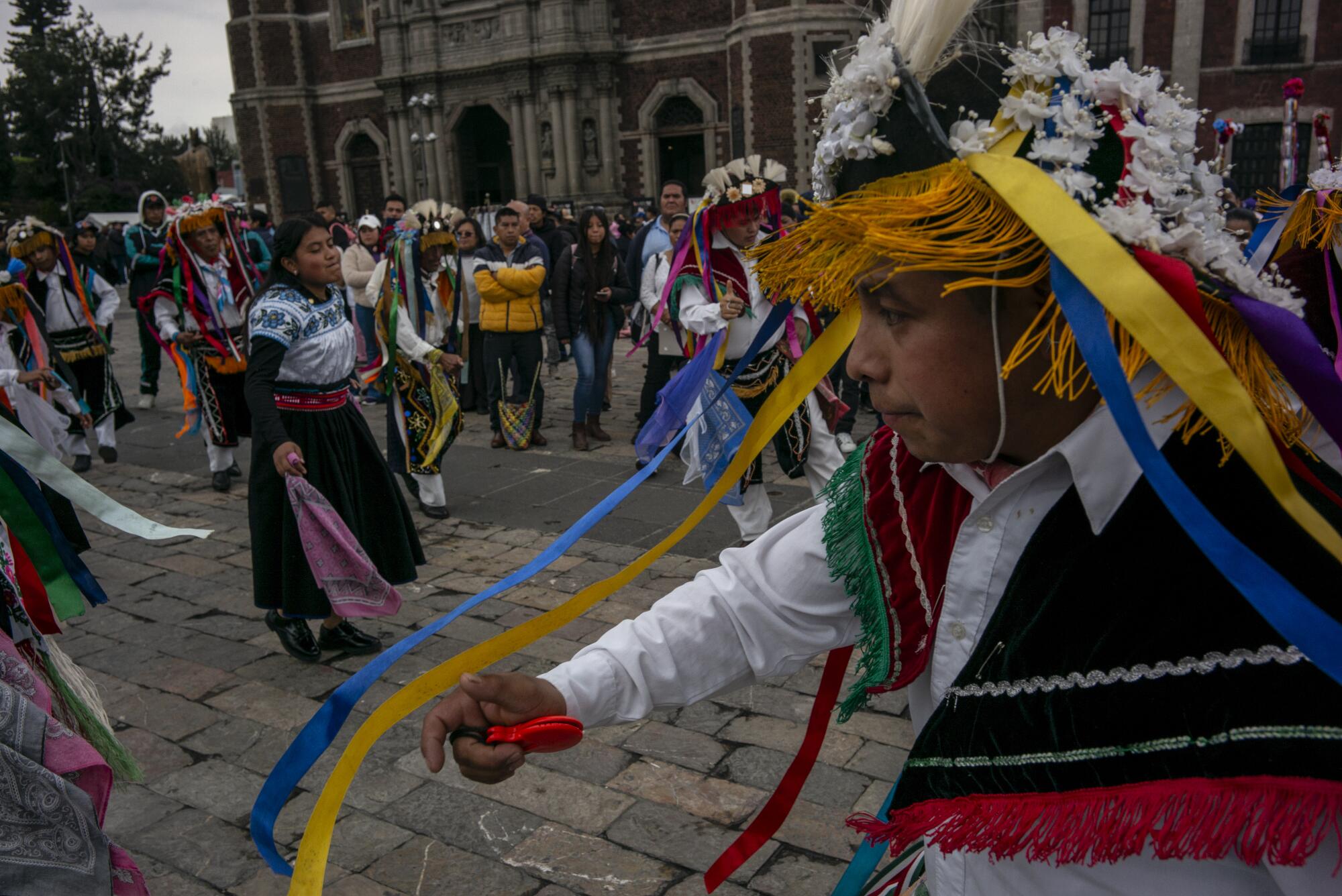
In the midst of cold weather and rain, physical exertion became a crucial sacrifice for those making the pilgrimage. On the way to the Capilla del Cerrito, at the top of the Tepeyac hill, people slowly ascended. Some took photos with their families, others walked in silence, and others climbed on their knees.
Fernando Velázquez made a promise or manda (a vow to a saint) to the Virgin in 2018 when his partner had a high-risk pregnancy. In 2019, Velázquez climbed the hill on his knees for the first time and pledged to do so for four years to pray for the health of his son. This year he fulfilled his promise, after being interrupted by the pandemic.
Dec. 12 marks a special day for Catholics, and for those of Mexican descent, it’s one of the most important holidays of the year.
“I feel happy and grateful, looking forward to returning next year,” said Velázquez after arriving at the place where the image of the Virgin of Guadalupe appeared on the tilma (mantle) of the Indigenous saint Juan Diego Cuauhtlatoatzin in 1531.
Velázquez, who lives in Ignacio Zaragoza, Tlaxcala, approximately 112 miles from the Basilica, has been coming with his family since he was 4 years old. This year, the Velázquez-Hernández family made the pilgrimage by bicycle for the first time, and they hope it will be the beginning of a new tradition.
1
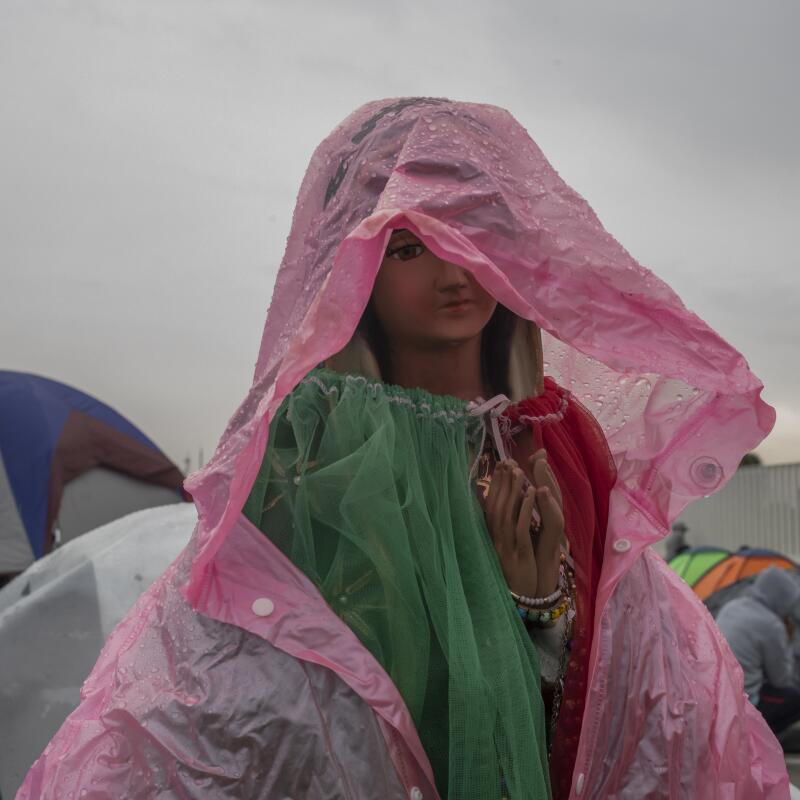
2
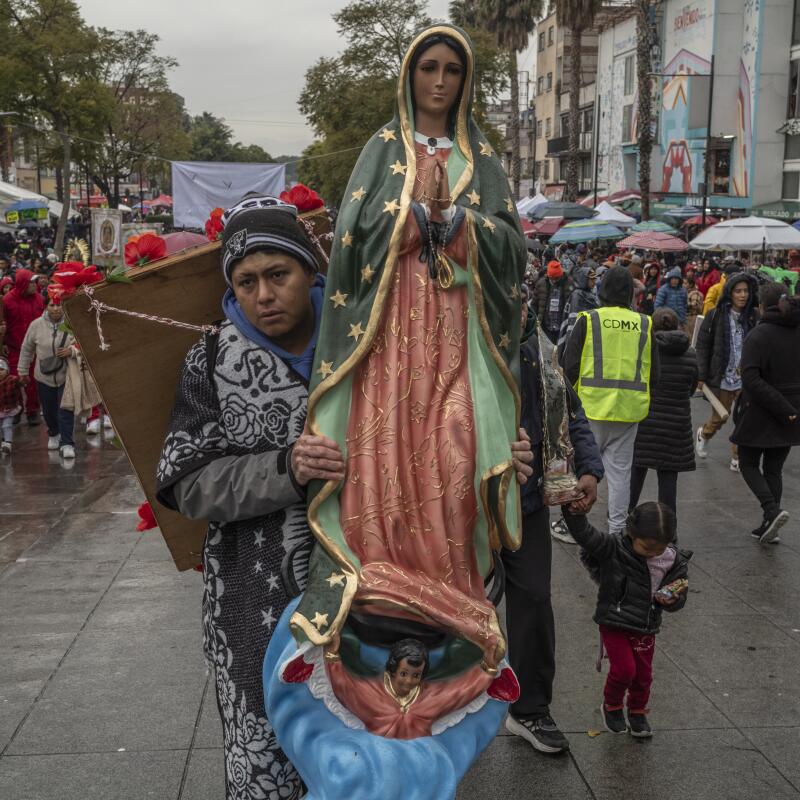
3
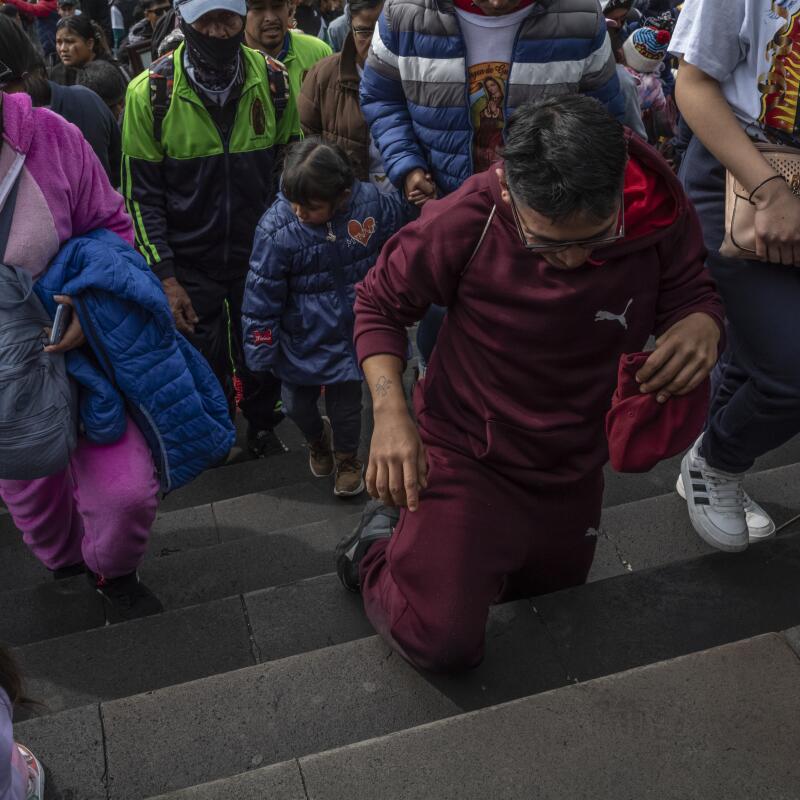
4
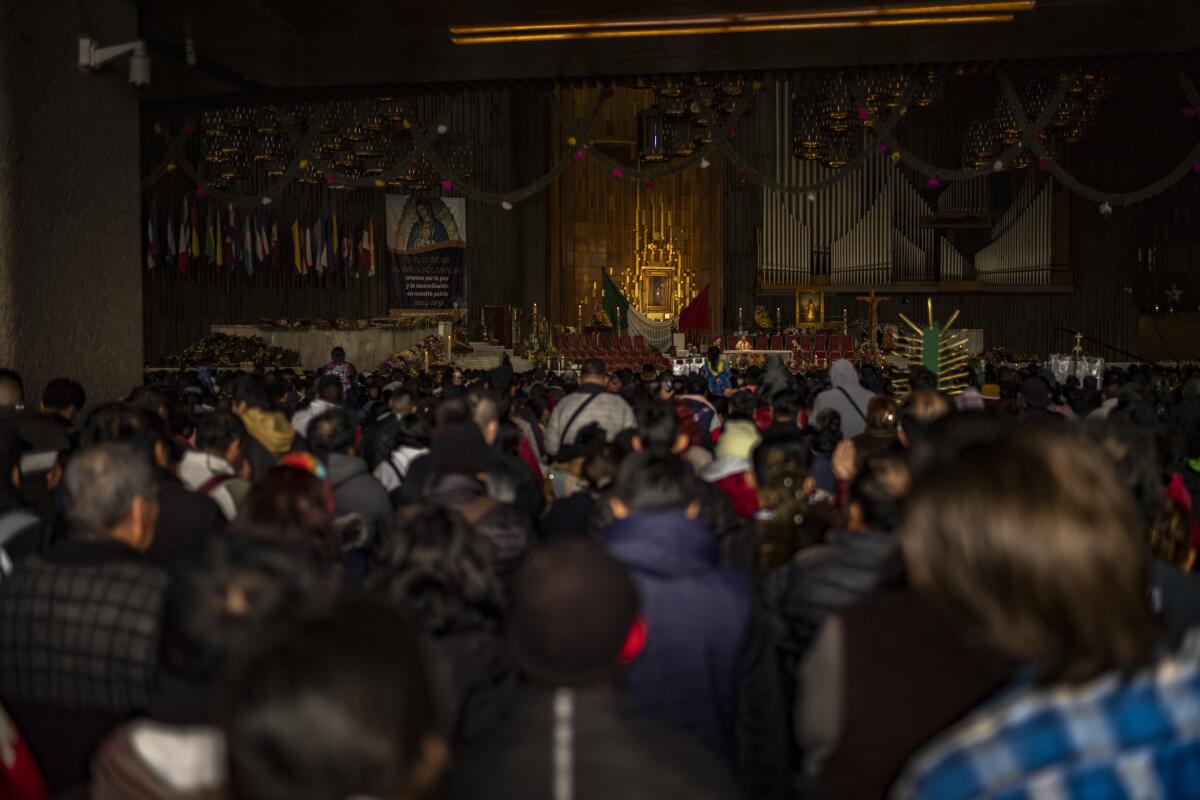
1. A figure of the Virgin of Guadalupe covered with a plastic bag to protect the figure from the rain. 2. Eduardo Quils, at the end of his pilgrimage, carries a figure of the Virgin of Guadalupe. 3. Fernando Velazquez walks on his knees to fulfill a four year promise he made to the Virgin of Guadalupe. 4. People attend a mass service in the Basilica of Guadalupe on Dec. 12, 2023, in Mexico City. (Alejandro Cegarra / For De Los)
Ecclesial communities, entire families and neighborhood groups begin arriving at the Basilica in the first days of December. The Quil family, butchers from generation to generation, left San Pedro Cholula, Puebla, about 79 miles away, on Dec. 9 and said they walked for 24 hours. Carrying a large statue of la Virgen, Eduardo Quil walked toward the Basilica with his two young daughters and his cousin in the early morning of Dec. 11.
“It is a tradition that we have every year. We’ve been walking year after year. And now we have been bringing the new generation, which are my nephews and my daughters,” said Quil.
🎁 De Los holiday 🎄
According to local authorities, from Dec. 9-12 more than 11 million people arrived at the Basilica of Guadalupe. People from different countries also joined the celebration, like Lilian Azucena Osorio, who traveled from Guatemala. “You come here to learn and enjoy everything that is beautiful here in Mexico. It’s very special,” Osorio said.
The reasons to visit the Virgin varied. “Each pilgrim brings his intention or his gratitude,” said Filiberto Esteban, 28, who came with his parents from the southern Mexican state of Chiapas. His older brother, who works in the fields of the southeastern United States, sent them money so they could travel 20 hours by bus, and for his parents to thank La Morenita for 40 years of marriage.
1
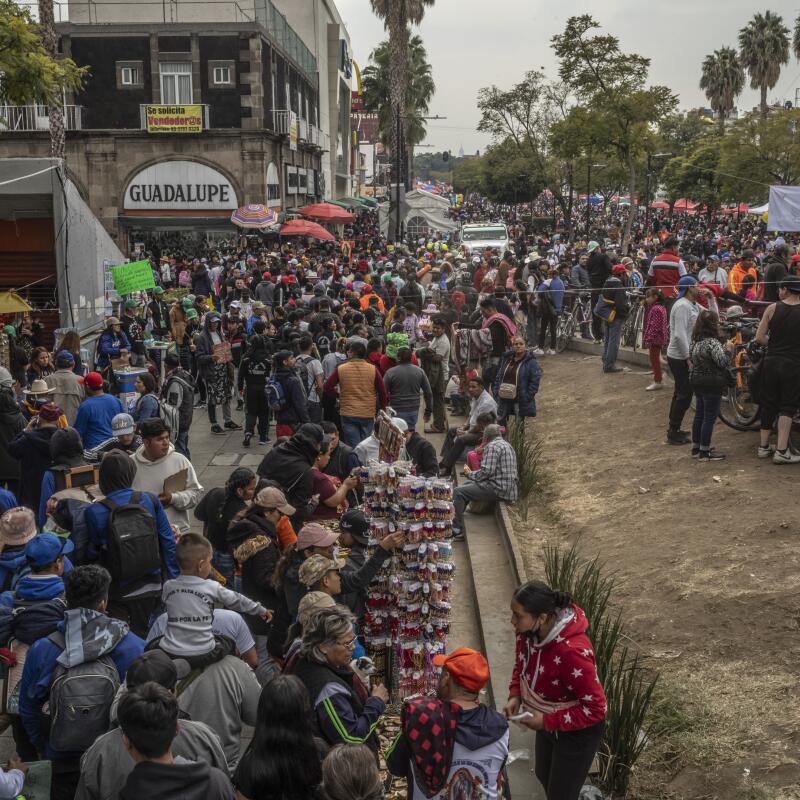
2
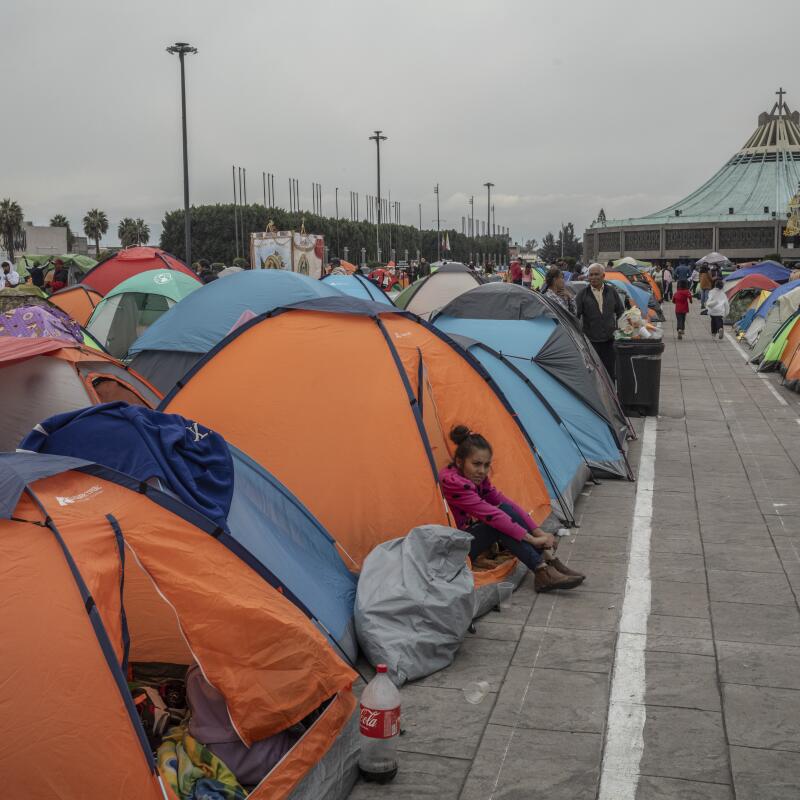
3
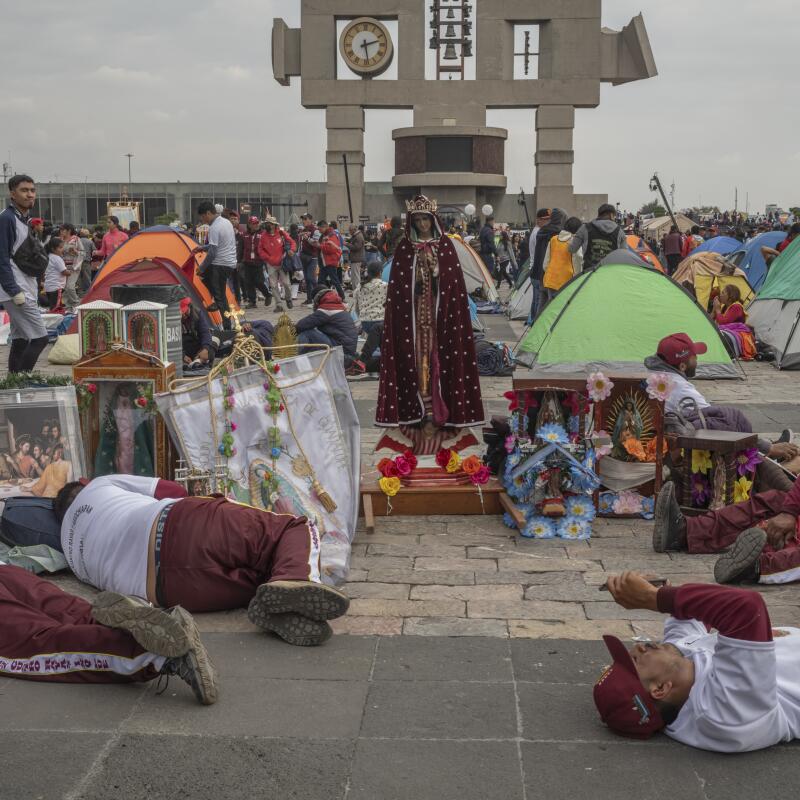
4
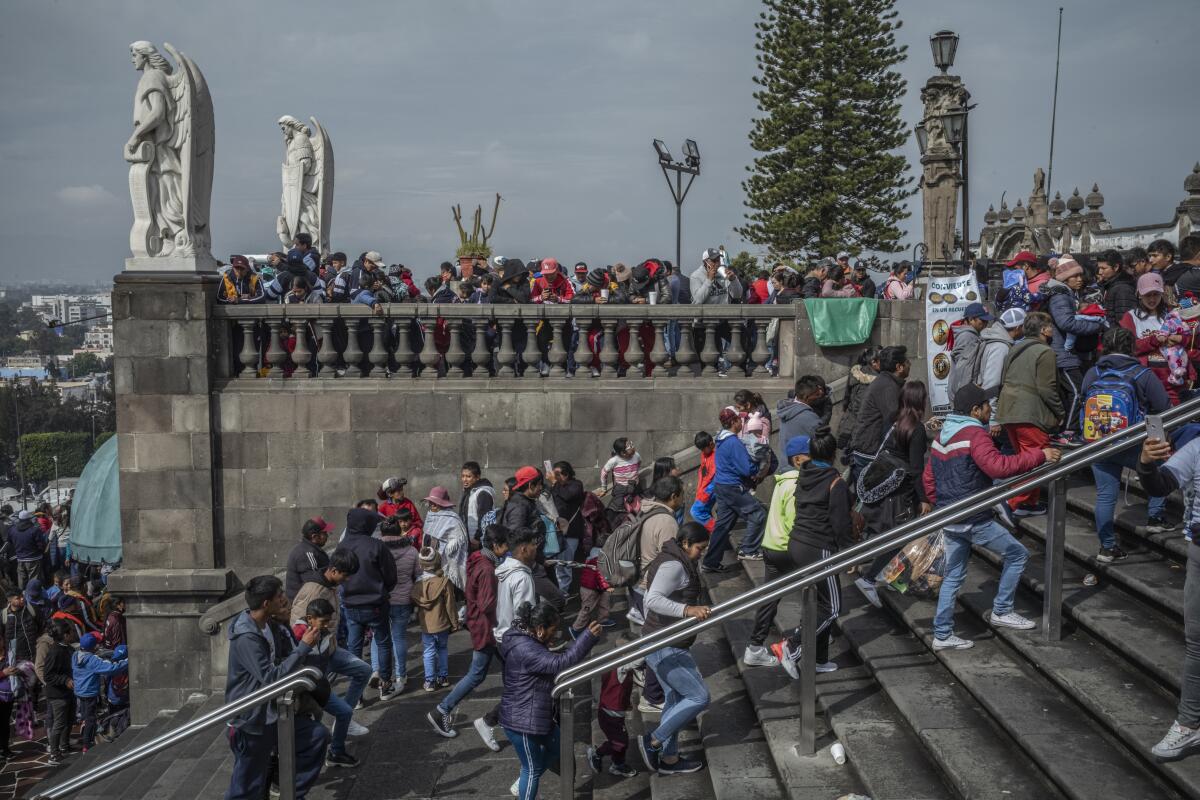
1. People walk in and out of the Basilica of Guadalupe on Dec. 11, 2023, in Mexico City. (Alejandro Cegarra / For De Los) 2. A woman rests inside her tent at the Basilica of Guadalupe on Dec. 11, 2023, in Mexico City. (Alejandro Cegarra / For De Los) 3. People sleep next to religious pictures and figures at the Basilica of Guadalupe on Dec. 11, 2023. (Alejandro Cegarra / For De Los) 4. People arrive to the top of Tepeyac Hill to finish their pilgrimage at the Basilica of Guadalupe on Dec. 11, 2023. (Alejandro Cegarra / For De Los)
While some attended Mass, others rested in their tents, or prepared to return home. The dances, which reflect Mexican syncretism, went on for hours. With large, colorful headdresses, the Matlachines Los Azules of Aguascalientes, from central Mexico, formed a line to start their dance. A young man played the popular “La Guadalupana” song on the violin as the crowd went silent. Omar Vázquez, director of the dance group, explained the Chichimecan origin of the dance.
“This dance is native and we have been venerating the Virgin for more than 50 years,” Vázquez said. “We are of Chichimeca origin and this dance is from generation to generation, from my great-grandfather to the children of our grandchildren.”
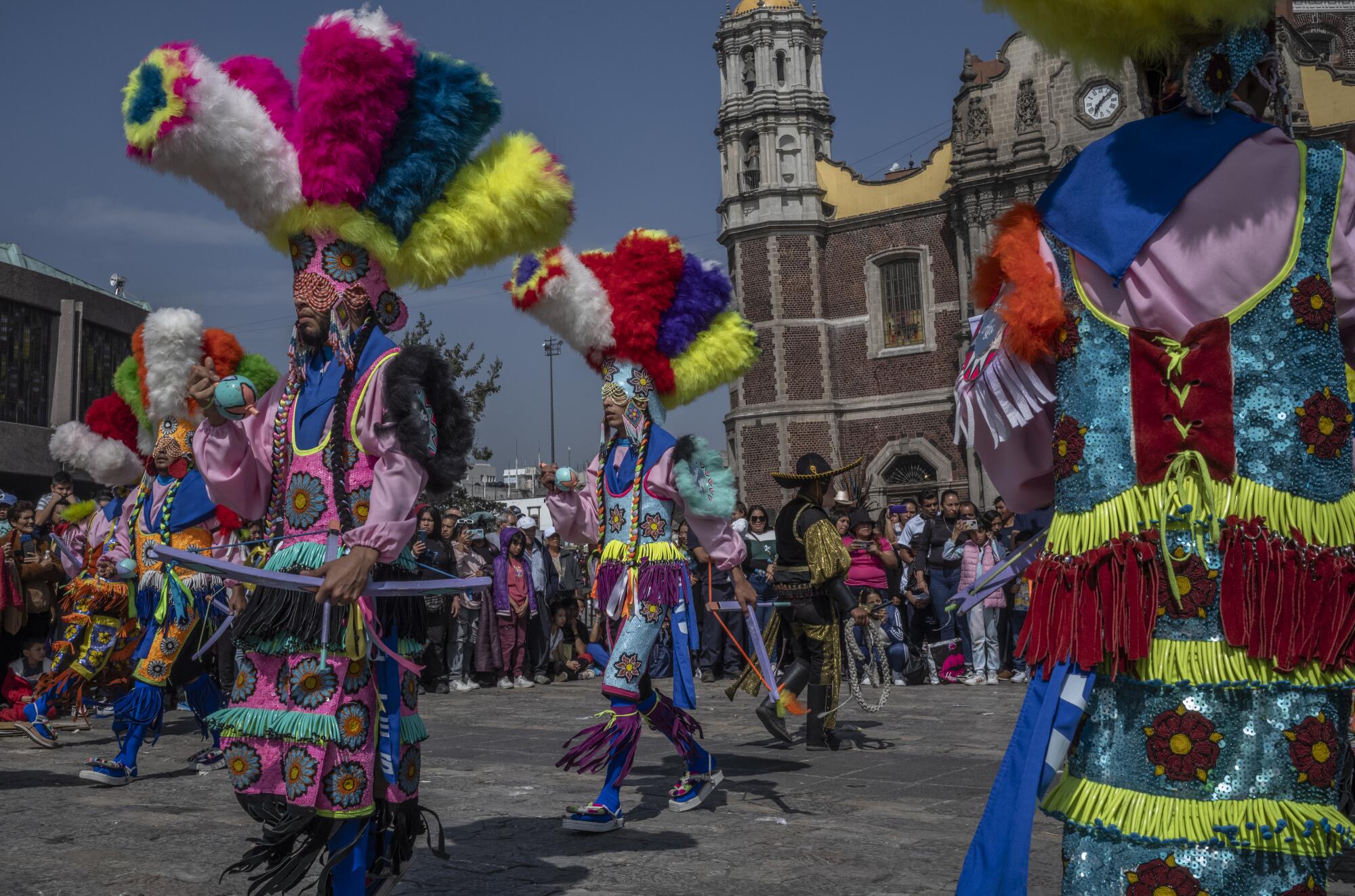
For many, fulfilling their manda is central in their pilgrimage, but for others, visiting the Guadalupana in her home is enough. Sandra Valdés, who traveled from Múzquiz, Coahuila, in northern Mexico, explained that the most important thing is to visit the Virgin and greet her either by praying, walking, singing or dancing.
“Here we are, at her house, 18 hours away from where we live,” said Valdés. “We can dance anywhere, but a mother always likes when we go to her home.”
Chantal Flores is an independent journalist based in Monterrey, Mexico. She covers the issue of enforced disappearance in Latin America and the Balkans, as well as gender, violence and social justice.
More to Read
The Latinx experience chronicled
Get the Latinx Files newsletter for stories that capture the multitudes within our communities.
You may occasionally receive promotional content from the Los Angeles Times.
